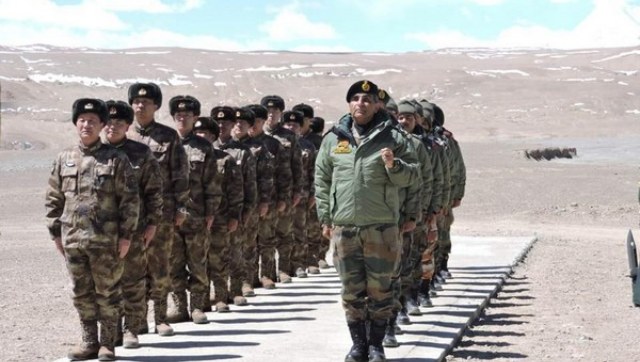It’s a strange ‘non war’ taking place at one of the worst battlefields the world has ever witnessed. Galwan valley itself is at about 13,500 feet, while the actual area of conflict, across the river is probably even higher. There is shock at the now confirmed report of the death of a commanding officer and at least 19 soldiers during the de-escalation process in the valley. The Indian Army clarified that casualties had occurred on both sides, including a ‘significant’ number of Chinese soldiers. Both sides however quickly began talks between senior officials, even as Delhi’s decision-makers met to discuss the issue. It’s not a situation that is easy to decipher for a number of reasons. First, is the perplexing question of how to estimate escalation. This is the first such incident since 1975, and therefore there is little to go by in terms of historical precedent. Going by the shorter time frame – from 5 May when the first clashes were reported in Pangong – this is definitely an escalation, though again, the incident did not involve any firing. It’s clear that the clash took place due to the ‘offensive perception’ by the Chinese of what constituted ‘status quo ante’. A detailed account seems to indicate that the commanding officer and his men went to oversee the ‘disengagement’ (reportedly) agreed upon at the 6 June meeting between senior officers. The PLA troops appear to have contested this, leading to the fight and the subsequent tragedy. Whether or not all of the casualties were due to the conflict itself, or worsened by the nature of the terrain and severe temperatures is unclear. Note that many Chinese troops were also injured and are possibly dead. Therefore, the extent of escalation and whether it was a deliberate decision by the Chinese remains unclear, wild allegations as to the Chinese occupying Indian territory notwithstanding. A second issue puzzling analysts is the issue of why China is intent on aggravation at all. Various theories have been floated, including as a warning against possible inclusion of Taiwan into the WHO when India takes over the chair, as an example of President Xi Jinping’s need for popularity, and more credibly, as a tactic to prevent India from building up infrastructure, particularly into the Galwan area near Patrolling Point 14 to connect it to the Darbuk-Shyok-Daulat Beg Oldi road. That seemed to be the crux of discussions between senior military officers in June. Hark back earlier, however. Early on in August 2019, the Chinese foreign minister Wang Yi was quoted as saying that the change in the status of Ladakh into a Union Territory “posed a challenge to China’s sovereignty and violated the two countries agreement on maintaining peace and stability in the border”. Foreign Minister S Jaishankar who was in Beijing on a scheduled visit, reiterated that not an inch of territory had been changed on the map, by the change in the status. Beijing waited till its exercises commenced in January 2020 and then began to slowly increase its presence in April. India did a mirror deployment, leading to the flare-up. None of this however entirely explains the reason for the present situation, especially since Chinese incursions have been reported further along Himachal Pradesh, Uttarakhand, Arunachal Pradesh and north Sikkim. Incidentally, the whole border row hardly merits much mention in the mainland press. So, the assumption that the whole incident is due to rising Chinese nationalism seems to be a weak one. A third question that is far more dangerous is the apparent disingenuity of official China. So far, the leadership of both countries have been at some pains to avoid unnecessary verbiage. Indeed, the Indian side has been remarkably agile in this, leading to accusations of ‘appeasement’. The Chinese Ambassador in India, while hardly enjoying amicable relations with the media, has been at pains to praise Chinese commitments to assist India in fighting the virus. However, he continued to do so even as China strengthened its forces along Ladakh in early June. So did the Chinese Foreign Ministry who’s spokesperson stressed stability in bilateral relations, in a post which also praised Beijing’s speed of deployment. All of this alongside a steady stream of anti-India rhetoric from Global Times and Chinese Think tanks. And now, post the incident in Galwan, is the deadly serious statement by a spokesman of the Chinese military that “The sovereignty over the Galwan Valley area has always belonged to China”. That’s as provocative as it gets at a time when both sides have massed their forces, including tanks, artillery and aircraft. But again, top decision-makers have to assess whether the statement has been made to create a wedge for negotiations, where India has demanded a return to status quo to April – not May – when China began its build-up across the LAC. That’s going to be tough to negotiate. Meanwhile, a hard-headed government would place its reliance on Chinese actions rather than a double-faced official narrative. It’s the fourth question that is even more puzzling. The Chinese People’s Daily reported that in a ‘rare event’, three US aircraft carriers were steaming towards Chinese waters. This included the USS Theodore Roosevelt, the USS Nimitz and USS Ronald Reagan, together with their strike groups, which represents a formidable array of forces. Beijing saw this exclusively as relating to the South China Sea and tensions in Hong Kong. New Delhi had no comment at all, even refuting an earlier statement by the US president that he had a chat with the prime minister, and politely disclaiming any need for the proffered ‘mediation’. It’s as well to remember, however, that quiet US assistance – particularly in intelligence – was evident even during Doka La, when New Delhi had again kept out the Americans. There’s no doubt that the presence of such a formidable force in the Indo-Pacific is disquieting for Beijing, and will inevitably affect decision making on Ladakh. In sum, what is evident is a ‘non-war’, fought for unknown reasons, for gains that are not perceptible, where the ‘official’ position is unknown, and with the possible assistance by a pure coincidence of what is still the most powerful armed forces in the world. No one should assume that official India knows very much more than is evident, particularly not whether Beijing is willing to risk war over the issue. That last lack of clarity is the most dangerous of all. It makes for greater opaqueness in what is already a ‘fog of war’ situation. In the heights at which this is being fought, that fog is only likely to get worse.
No one should assume that official India knows very much more than is evident, particularly not whether Beijing is willing to risk war over the issue.
Advertisement
End of Article


)

)
)
)
)
)
)
)
)



